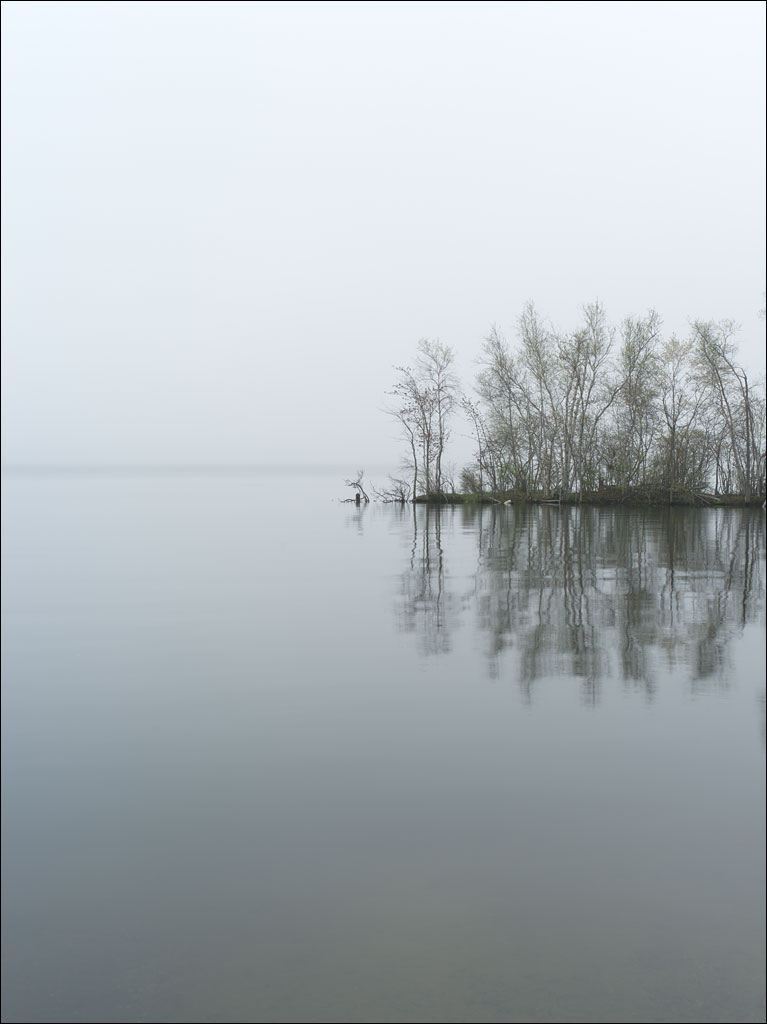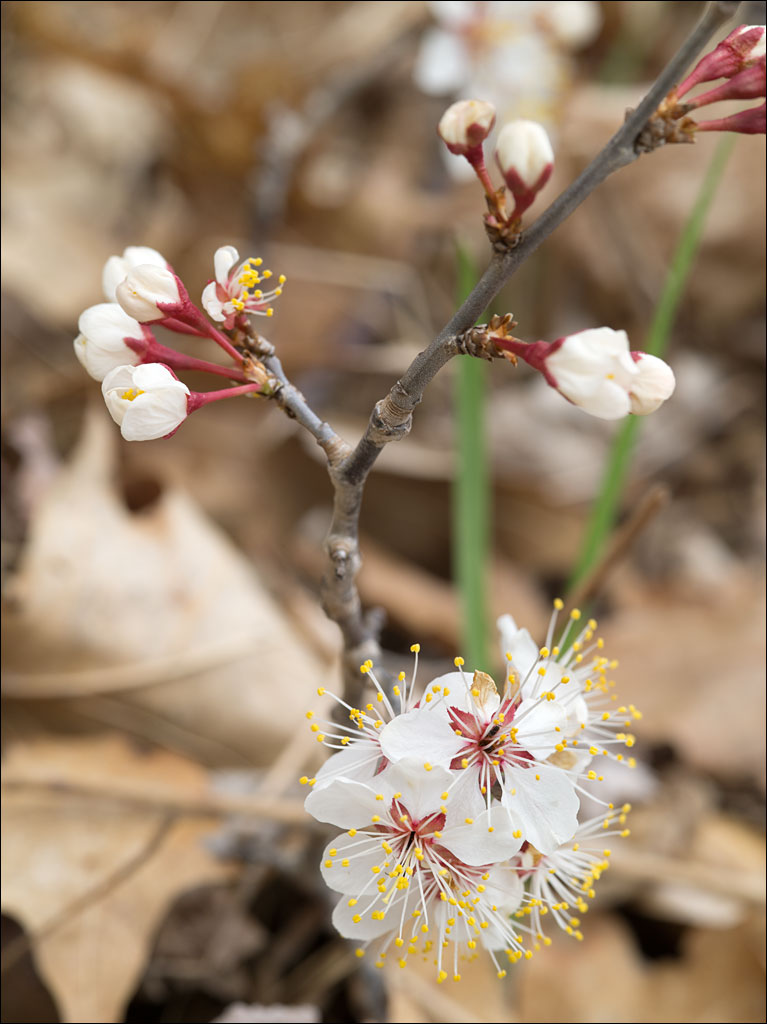Tag Archives: Spring in Maine
Plum in Bloom
 Our wild plum are now in bloom. The trees cluster around an old ash at the entrance of our driveway. Since the forest has not come into foliage, the light from the setting sun strikes them in the evening. The bloom are still white, but they will turn pink as the leaves come out. In August, we can harvest the fruit. Click on the image for a larger view.
Our wild plum are now in bloom. The trees cluster around an old ash at the entrance of our driveway. Since the forest has not come into foliage, the light from the setting sun strikes them in the evening. The bloom are still white, but they will turn pink as the leaves come out. In August, we can harvest the fruit. Click on the image for a larger view.
May Day 2016
Aaaaggh…
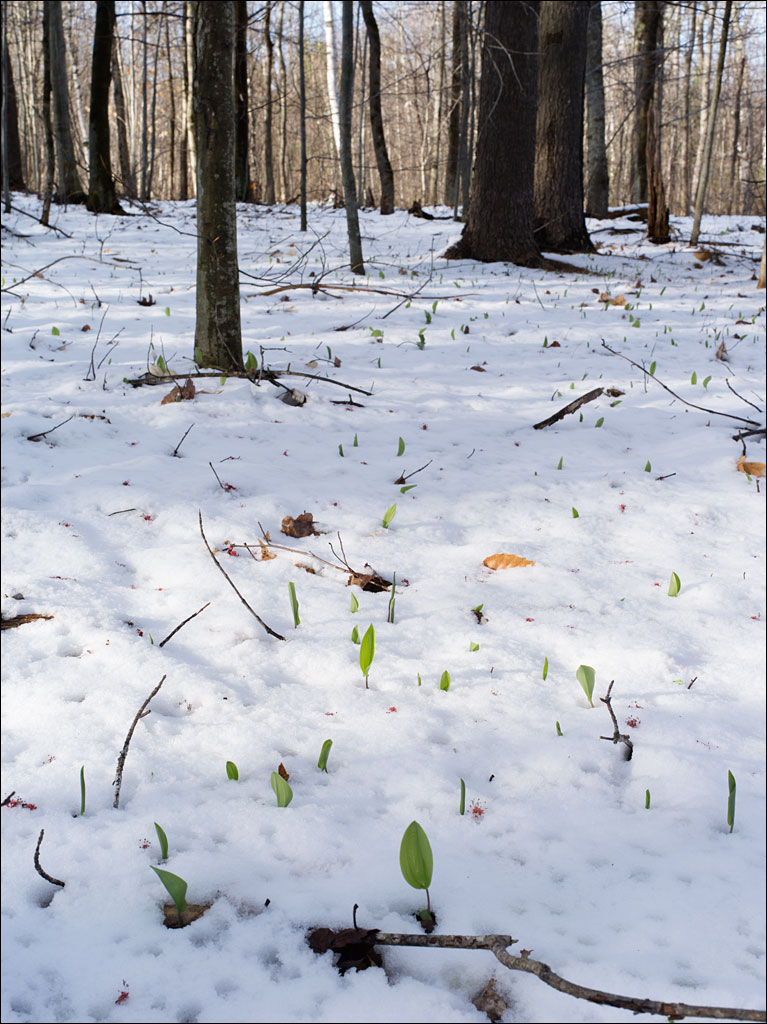 Yesterday was April 26th (not March 26th, although it looked like it). It snowed all day. This is a bit disheartening. Naomi and I hope the cold has not harmed the budding plants. We are supposed to go below freezing for the next few nights. The daytime temperatures should be in the 50s, which will help. Click on the image for a larger view.
Yesterday was April 26th (not March 26th, although it looked like it). It snowed all day. This is a bit disheartening. Naomi and I hope the cold has not harmed the budding plants. We are supposed to go below freezing for the next few nights. The daytime temperatures should be in the 50s, which will help. Click on the image for a larger view.
Red Trillium
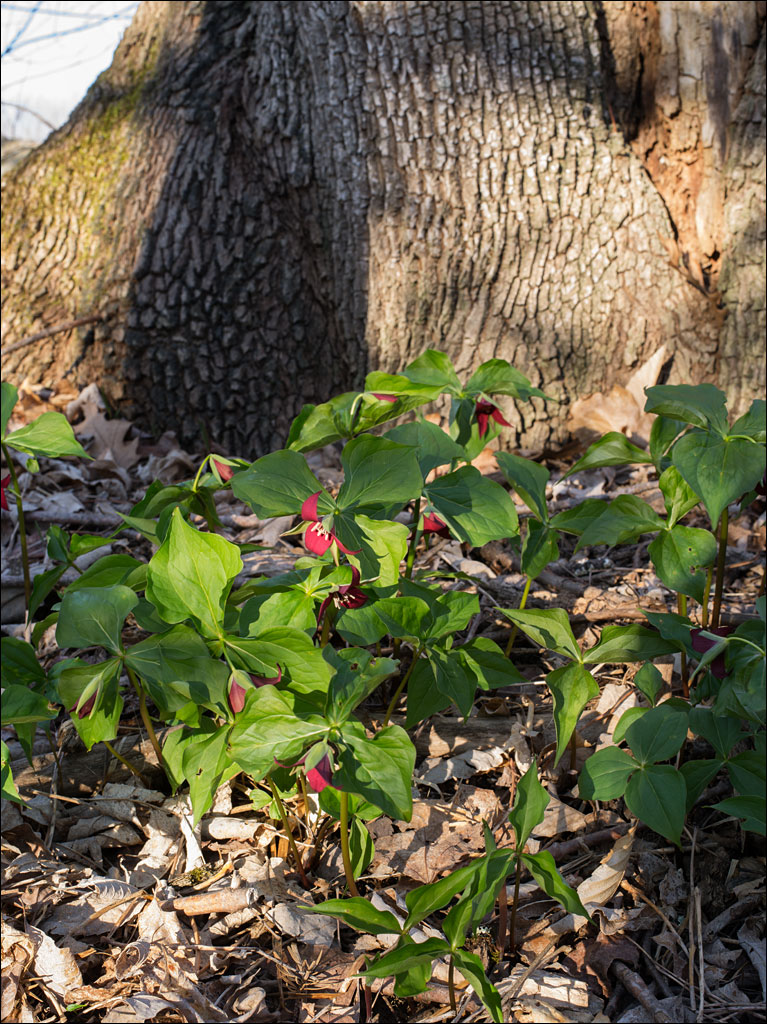 We have been having a stretch of warm weather, at least in the low 60°F. The warmth has felt really good, especially since the last two winters have been really long. And with this warm spell, we are seeing a return of life. One of the plants that has just returned to our forest floor is the red trillium or trillium erectum. Like the robin, it is a herald of spring, which gives it its common name—wake-robin. But it is a spring ephemeral, a short-lived plant, surviving long enough to complete its reproduction cycle. By the time the fern return, this plant will be gone. Two things about this herbaceous perennial: it is toxic and the bloom smells like rotting meat (flies are its primary pollinator). Click on the image for a larger view.
We have been having a stretch of warm weather, at least in the low 60°F. The warmth has felt really good, especially since the last two winters have been really long. And with this warm spell, we are seeing a return of life. One of the plants that has just returned to our forest floor is the red trillium or trillium erectum. Like the robin, it is a herald of spring, which gives it its common name—wake-robin. But it is a spring ephemeral, a short-lived plant, surviving long enough to complete its reproduction cycle. By the time the fern return, this plant will be gone. Two things about this herbaceous perennial: it is toxic and the bloom smells like rotting meat (flies are its primary pollinator). Click on the image for a larger view.
Cycles of Life
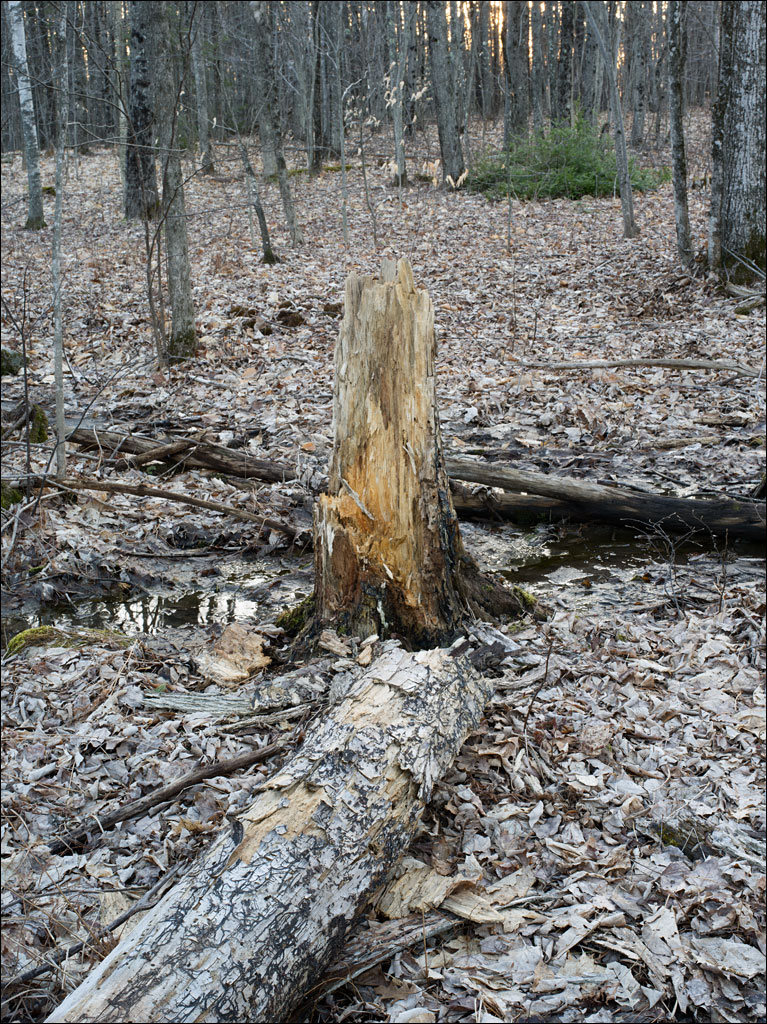 We lost a tree last weekend in the wind. If truth be told, the tree had been dead for some time. It was just waiting for the wind to bring it down.
We lost a tree last weekend in the wind. If truth be told, the tree had been dead for some time. It was just waiting for the wind to bring it down.
Poets don’t speak of this season, at least not in waxing lyrical verse. But, for me, the forest manifests a richness that is analogous to its power in the summer. Like ouroboros, the serpent that eats its own tail, the forest is its own progenitor. Click on the image for a larger view.
Wild Turkey
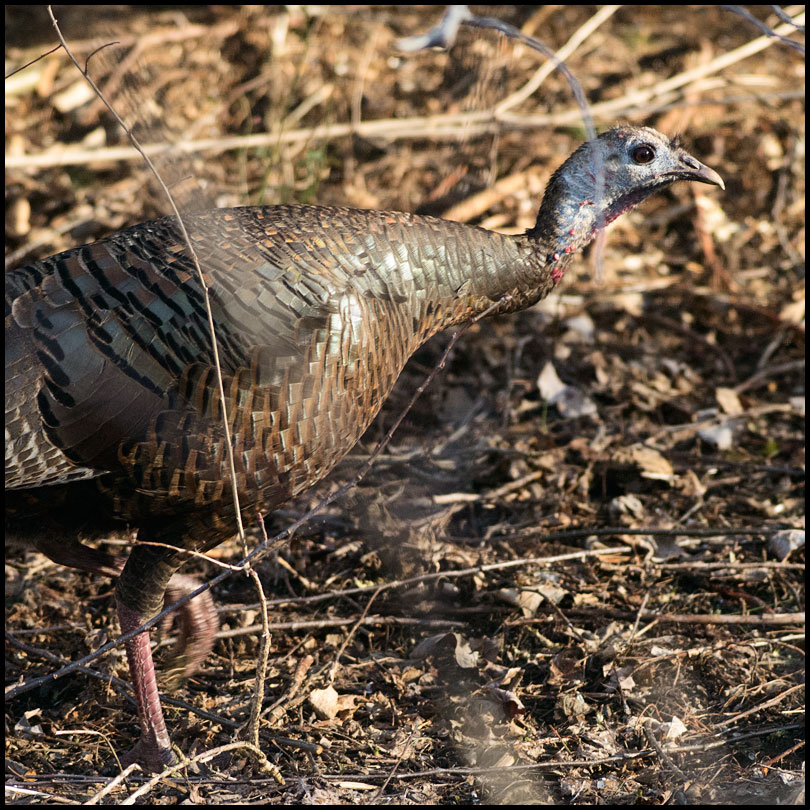 Wild turkey, Meleagris gallopavo, usually don’t approach the house so close as they can detect our Newfoundland Hikari. This animal was visiting our bird feeders. For such a large bird, it is amazing how fast they can disappear into the forest. Their plumage is like an invisibility cloak, even with their blue and red heads Continue reading
Wild turkey, Meleagris gallopavo, usually don’t approach the house so close as they can detect our Newfoundland Hikari. This animal was visiting our bird feeders. For such a large bird, it is amazing how fast they can disappear into the forest. Their plumage is like an invisibility cloak, even with their blue and red heads Continue reading
Three Trees
 What is this curious addiction to form humans have? We talk about beauty as if it is a quality of things out in the world. But beauty, as the expression goes, is in the eye of the beholder. That is actually a complex statement. You could take it to simply mean it is a personal opinion, but it is more complex than that: beauty only exists in the beholder. Seeing, or rather experiencing, beauty is an evolved human quality—we are built to create it. But, like most human qualities, we have different capacities to experience it. Eric Kandel in his book The Age of Insight states, “The beauty of an image may recruit not simply a positive emotion, but something more like love, an aesthetic addiction…” Beauty, it seems, lets us fall in love with the world. Click on the image for a larger view.
What is this curious addiction to form humans have? We talk about beauty as if it is a quality of things out in the world. But beauty, as the expression goes, is in the eye of the beholder. That is actually a complex statement. You could take it to simply mean it is a personal opinion, but it is more complex than that: beauty only exists in the beholder. Seeing, or rather experiencing, beauty is an evolved human quality—we are built to create it. But, like most human qualities, we have different capacities to experience it. Eric Kandel in his book The Age of Insight states, “The beauty of an image may recruit not simply a positive emotion, but something more like love, an aesthetic addiction…” Beauty, it seems, lets us fall in love with the world. Click on the image for a larger view.
Spring on hold
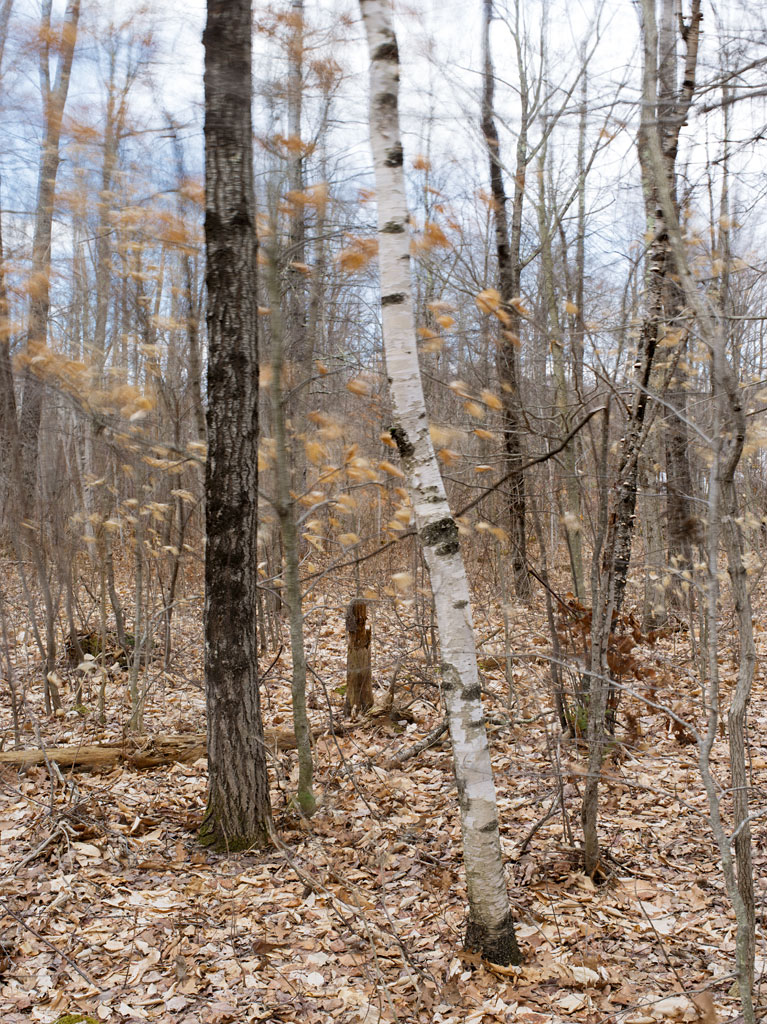 After a few weeks of warm weather, winter made itself felt last weekend. The temperatures fell to freezing and strong winds made it feel even colder. Even our forest was no shelter against the wind. But despite the brown landscape, we are encourage by the sprouting of our daylilies and daffodils. Click on the image for a larger view.
After a few weeks of warm weather, winter made itself felt last weekend. The temperatures fell to freezing and strong winds made it feel even colder. Even our forest was no shelter against the wind. But despite the brown landscape, we are encourage by the sprouting of our daylilies and daffodils. Click on the image for a larger view.

